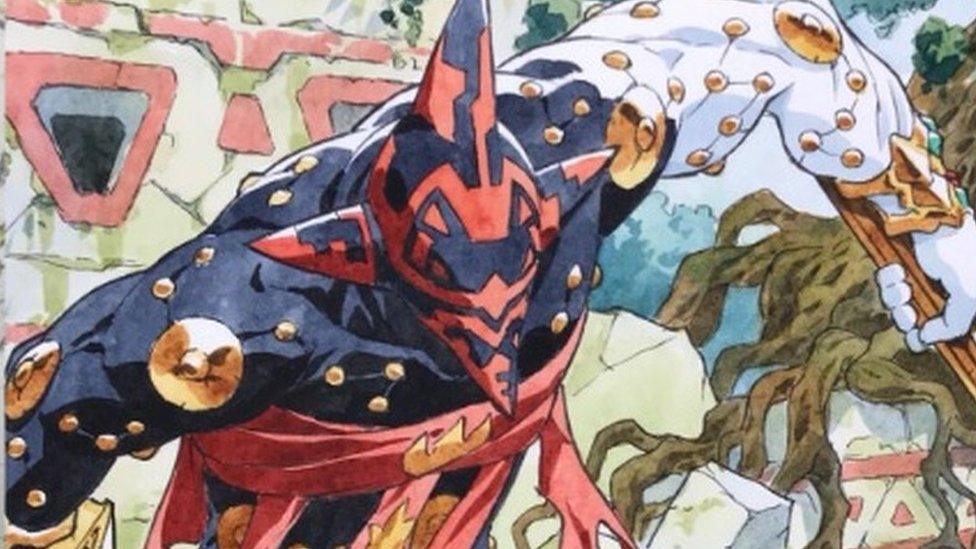Star Wars Visions: How Star Wars is inspired by Japanese culture
- Published
- comments

Star Wars: Visions is a brand new look at a galaxy far, far away using Japanese anime.
Released on Disney+ as a collection of nine original stories, each episode has been made by seven different Japanese animation studios.
Anime is the word used for Japanese animation and refers specifically to animation produced in the country. One really famous example is the animated Pokémon series.
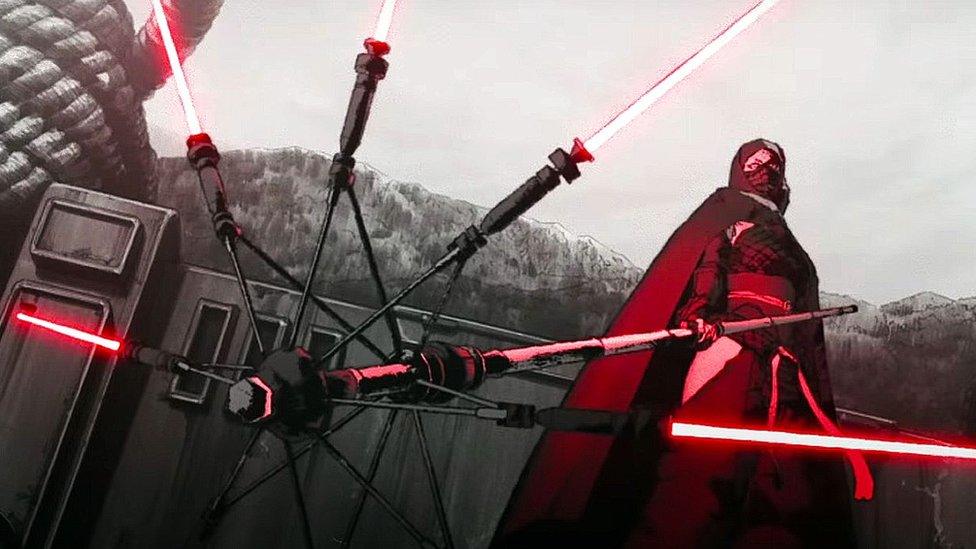
All the stories in Visions have a slightly different look and feel; episode one is almost entirely black and white and features a Sith warrior preparing for battle with a lightsaber umbrella, and there's also a droid in a straw hat.
Episode two is much less serious and includes a rock star space slug with a nose ring and an electric guitar, as well as a cameo from Boba Fett.
Although the stories are different to any other Star Wars released before, the series mixes old elements seen in the movies with new ideas.
But Visions isn't the first time Star Wars has been inspired by Japanese culture.

Chanbara (チャンバラ) - Japanese sword fighting movies
In the 44 years that Star Wars has existed, it's had more spin offs and inspired more movies and TV shows than there are clones in the Clone Wars.
But Star Wars itself was actually inspired by an old Japanese film from the 1950s called "The Hidden Fortress".
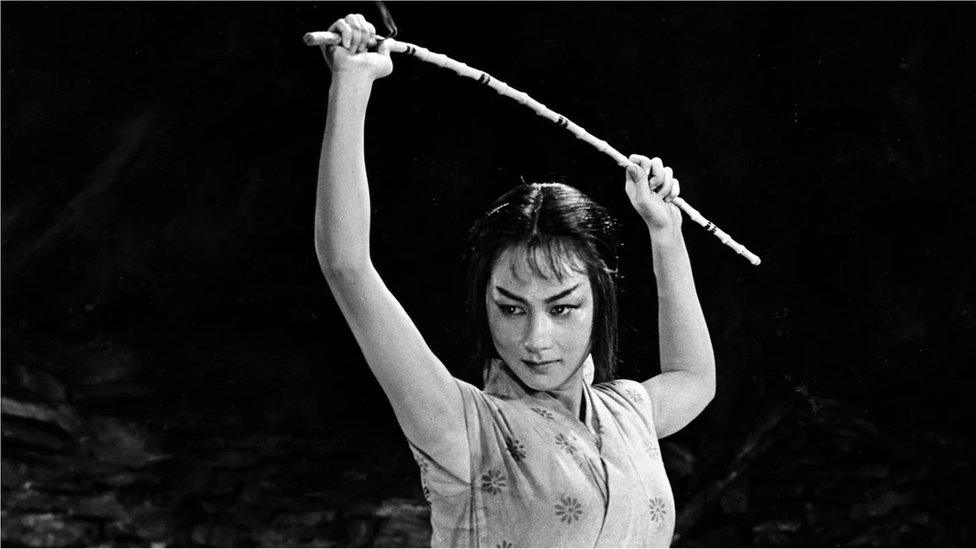
A Japanese film called The Hidden Fortress inspired Star Wars
Speaking about the film, Star Wars creator George Lucas has said: "The one thing that really struck me about The Hidden Fortress, was the fact that the story was told from the [perspective of] the two lowest characters.
"I decided that would be a nice way to tell the Star Wars story, which was to take the two lowest characters, as Kurosawa [the film's director] did, and tell the story from their point of view, which in the Star Wars case is the two droids."
The Japanese influence has continued since Disney took over Star Wars. Before Visions came out, the staff that Rey uses in the sequel trilogy is similar to those held by characters in The Hidden Fortress.
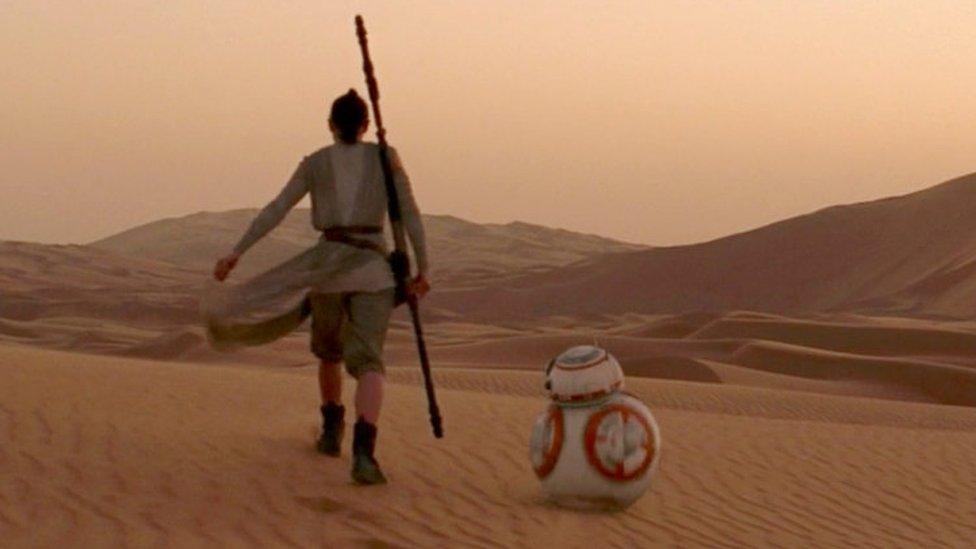
The Hidden Fortress influence has continued in the newer films with the staff held by Rey in the Force Awakens
The Hidden Fortress is described as a 'samurai movie', which at the time of release, was the biggest genre in Japanese filmmaking.
The samurai movies, known as chanbara which means "sword fighting" movies in Japan, were the country's version of the popular American westerns. The films referenced stories from Japanese history, just like cowboy westerns referenced American history.
Several hundred years ago in Japan, the samurai were highly skilled warriors. These warriors had long swords and were experts in martial arts.
Like the samurai, the Jedi in Star Wars are skilled warriors; they use the the force, follow moves similar to real life martial arts and also fight using swords - although the swords in Star Wars are made from beams of light and are called lightsabers.
Darth Vader
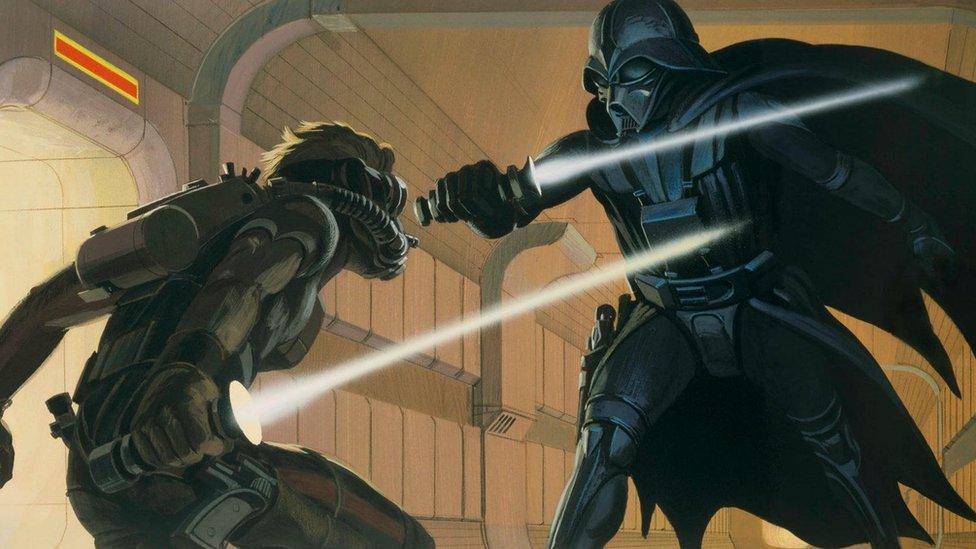
Early concept art for the character of Darth Vader, the design was inspired by Japanese samurai
One of the most famous movie villains of all time shares a lot in common with one of the most iconic and fearsome warlords in Japanese history.
The design of Darth Vader's helmet is inspired by the samurai - the triangular shape with the shield around the neck and sides. His robes are also borrowed from samurai design.
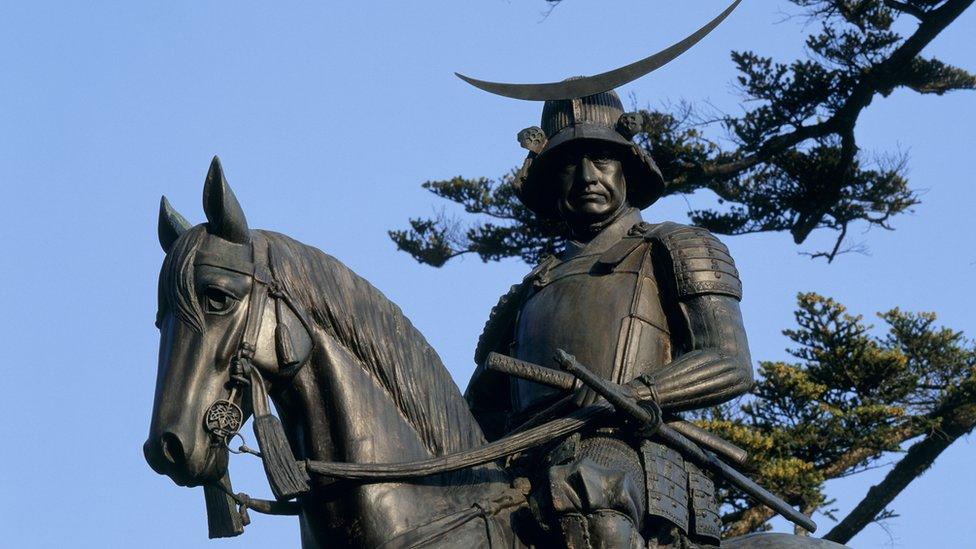
Notice the similar shaped helmet? Japanese warrior Date Masamune was the inspiration for Star Wars villain Darth Vader
But specifically, it was a real-life warrior, named Date Masamune that provided the inspiration for the character.
Not only did he wear distinguishable black armour, he had a reputation as being both kind and vengeful. Which are two character traits seen in Anakin Skywalker and later Darth Vader.
- Published4 May 2020
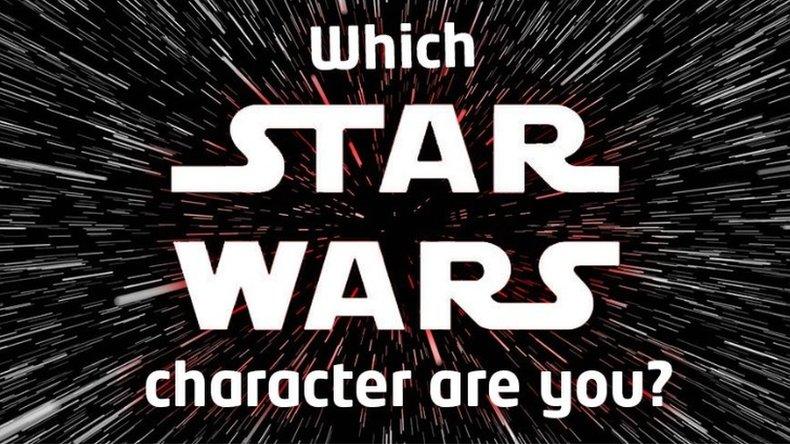
- Published26 February 2024
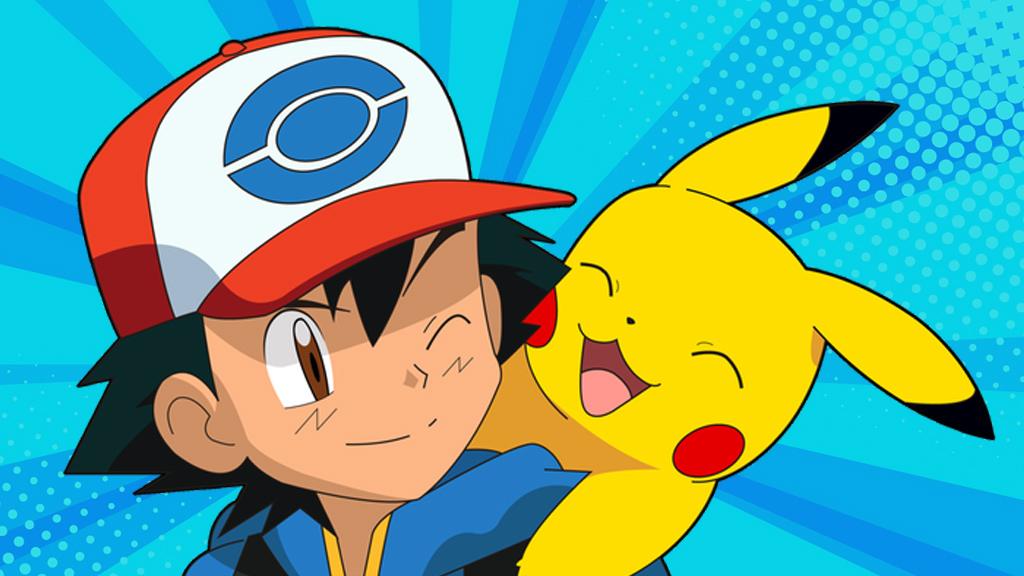
- Published29 November 2018
